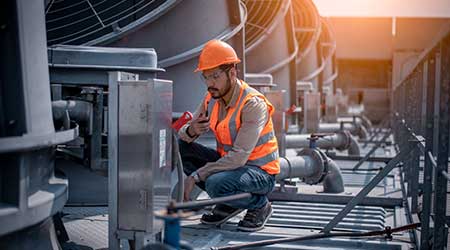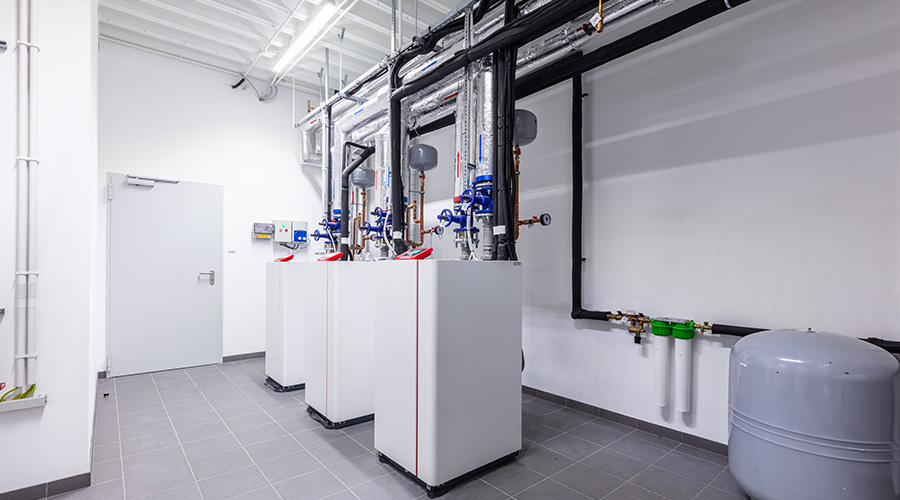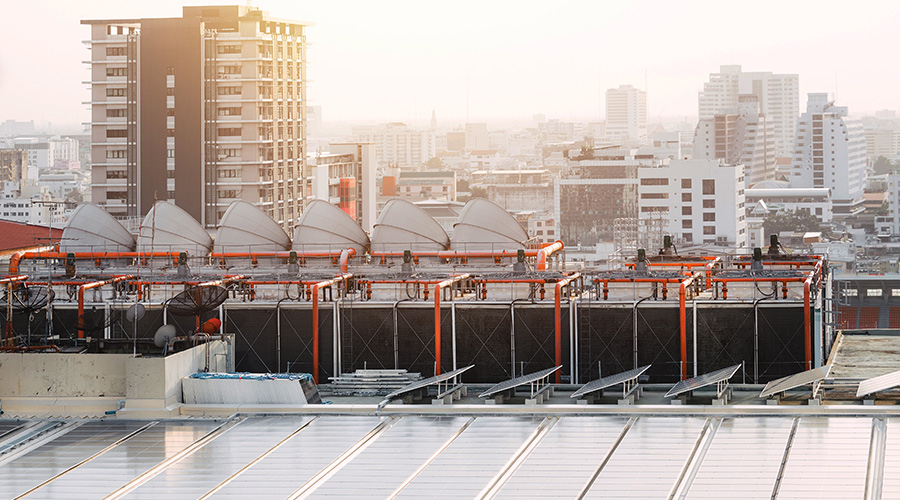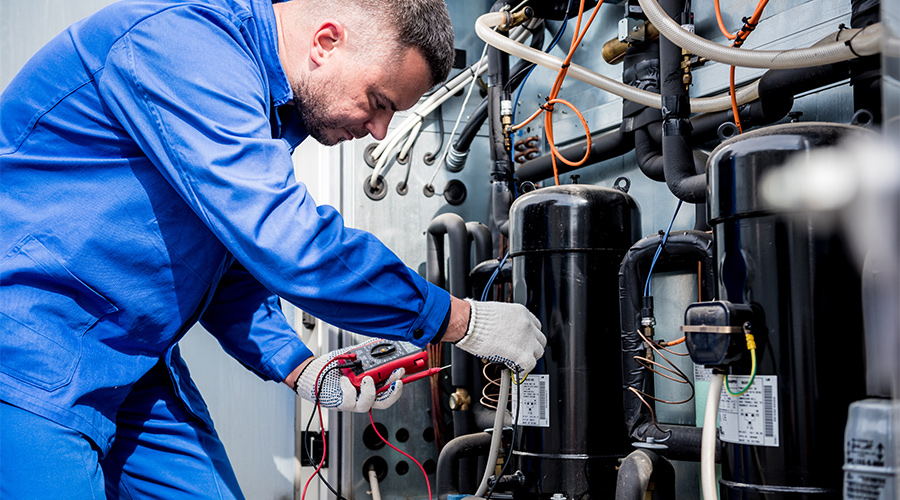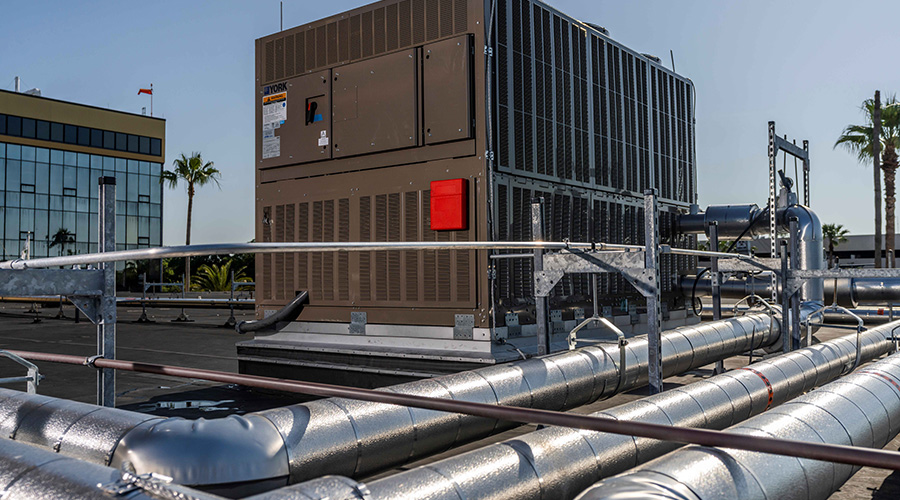3 Ways To Increase Chiller Efficiency
VFDs, parallel devices, and increasing supply temperatures all contribute to energy savings for chiller plants.
Editor's note: This article was previously published in 2018 and has been updated to reflect current information.
It’s that time of year again – summer - and warmer weather brings calls to ensure that chillers are running more efficiently than ever. Though chillers may have the largest peak load of any component, it may not be the largest contributor to total annual energy consumption. Here are three things to consider when making operational changes to guarantee the efficiency of chillers all year long.
1. Consider variable speed retrofits
Most components within a chilled water system will benefit from variable speed drives. In fact, most current energy codes require VFDs for these components in new systems and major retrofits. VFD costs have also decreased dramatically in the last several years.
As shown by the constant- and variable-speed chiller efficiency charts on page 38, there is a huge benefit to VFDs for chillers, but only if condenser water temperature relief is also implemented.
Cooling tower fans are another opportunity to save energy with VFDs. As loading and outdoor wet-bulb temperature decrease, variable speed fan motors not only save fan energy due to fan law benefits (a fan at 50 percent speed draws 12.5 percent of the power of a fan operating at 100 percent), but also provide more stable temperature control.
Variable speed pumping can provide an energy savings opportunity, but requires a close look at other parts of the system. On the chilled water side, a constant to variable flow retrofit may involve major and costly renovations of control valves and control sequences. Also, variable flow capabilities of existing chillers need to be reviewed. Low flow limits of the chiller may reduce the economic feasibility of variable chilled water pumping. On the condenser water side, variable flow control may be limited by chiller flow requirements or cooling tower fouling/freezing concerns. However, if pumps are oversized on a constant flow system, balancing pump flow by lowering speed versus flow restriction using a balancing value may provide good payback, even without adding variable flow during system operation.
2. �More is less: Running multiple parallel devices optimizes savings
Chiller plant equipment generally runs more efficiently at part-load. Chillers, for example, can run at optimum efficiency somewhere between 40 percent and 60 percent of peak capacity. Cooling tower fans and system pumps that are piped in parallel may also benefit from a control scheme that operates more pieces of equipment at lower speeds, versus a staging scheme which allows operating equipment to increase to full capacity before staging on the next unit. For cooling towers and chillers, running more equipment maximizes heat transfer surface area at all operating points, which increases efficiency and reduces pressure drops. For pumps, taking advantage of pump law savings and running at optimum pump efficiency points is key. The pump law is similar to the fan law: When pump speed is reduced, energy consumption is cut by the cube of the reduction in speed. However, any control scheme change needs to consider minimum chiller and cooling tower flow limits.
3. �Increase supply temperatures
Most commercial systems are designed with a chilled water supply temperature in the range of 40 F to 45 F. This generally allows for proper dehumidification and an acceptable supply air temperature for occupant spaces during peak times. However, these peak weather and load conditions are rarely seen.
Implementing supply air temperature reset control can save energy in several ways. First, when cold supply air temperatures are not required (acceptable humidity levels and no zones at peak load), raising supply temperatures can help prevent over-dehumidification of spaces and unneeded latent cooling. More importantly, higher supply air setpoints can allow chilled water supply temperature to be increased, substantially improving chiller efficiency. In general, chiller efficiencies improve approximately 2 percent for every degree that chilled water supply temperature is increased.
Other design and control features should also be investigated to optimize energy savings. As noted earlier, VFDs on all or some components should be considered. Also, a close look at setpoints, temperature reset, and other simple control sequence changes are usually effective and have minimal cost.
Of course, these methods are not right for every system. Depending on budget and financial requirements, climate, expected load profile, and existing equipment limitations, your optimal solution will be unique and will likely require an engineering analysis and annual energy use calculations.
Thomas Squillo serves as technical director, mechanical, for Environmental Systems Design.
Related Topics:








